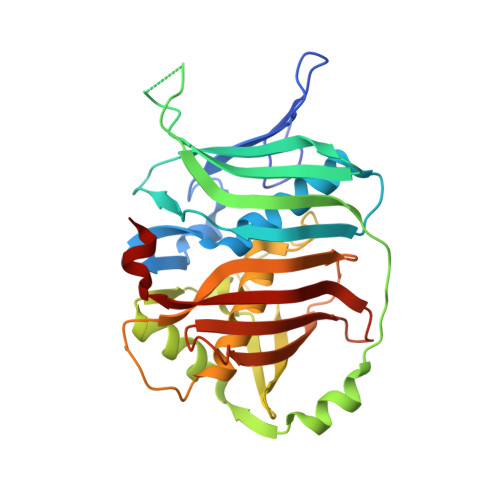Vinylogous Dehydration by a Polyketide Dehydratase Domain in Curacin Biosynthesis.
Fiers, W.D., Dodge, G.J., Sherman, D.H., Smith, J.L., Aldrich, C.C.(2016) J Am Chem Soc 138: 16024-16036
- PubMed: 27960309
- DOI: https://doi.org/10.1021/jacs.6b09748
- Primary Citation of Related Structures:
5TZ5, 5TZ6, 5TZ7 - PubMed Abstract:
Polyketide synthase (PKS) enzymes continue to hold great promise as synthetic biology platforms for the production of novel therapeutic agents, biofuels, and commodity chemicals. Dehydratase (DH) catalytic domains play an important role during polyketide biosynthesis through the dehydration of the nascent polyketide intermediate to provide olefins. Our understanding of the detailed mechanistic and structural underpinning of DH domains that control substrate specificity and selectivity remains limited, thus hindering our efforts to rationally re-engineer PKSs. The curacin pathway houses a rare plurality of possible double bond permutations containing conjugated olefins as well as both cis- and trans-olefins, providing an unrivaled model system for polyketide dehydration. All four DH domains implicated in curacin biosynthesis were characterized in vitro using synthetic substrates, and activity was measured by LC-MS/MS analysis. These studies resulted in complete kinetic characterization of the all-trans-trienoate-forming CurK-DH, whose k cat of 72 s -1 is more than 3 orders of magnitude greater than that of any previously reported PKS DH domain. A novel stereospecific mechanism for diene formation involving a vinylogous enolate intermediate is proposed for the CurJ and CurH DHs on the basis of incubation studies with truncated substrates. A synthetic substrate was co-crystallized with a catalytically inactive Phe substitution in the His-Asp catalytic dyad of CurJ-DH to elucidate substrate-enzyme interactions. The resulting complex suggested the structural basis for dienoate formation and provided the first glimpse into the enzyme-substrate interactions essential for the formation of olefins in polyketide natural products. This examination of both canonical and non-canonical dehydration mechanisms reveals hidden catalytic activity inherent in some DH domains that may be leveraged for future applications in synthetic biology.
Organizational Affiliation:
Department of Medicinal Chemistry, College of Pharmacy, University of Minnesota , Minneapolis, Minnesota 55455, United States.















